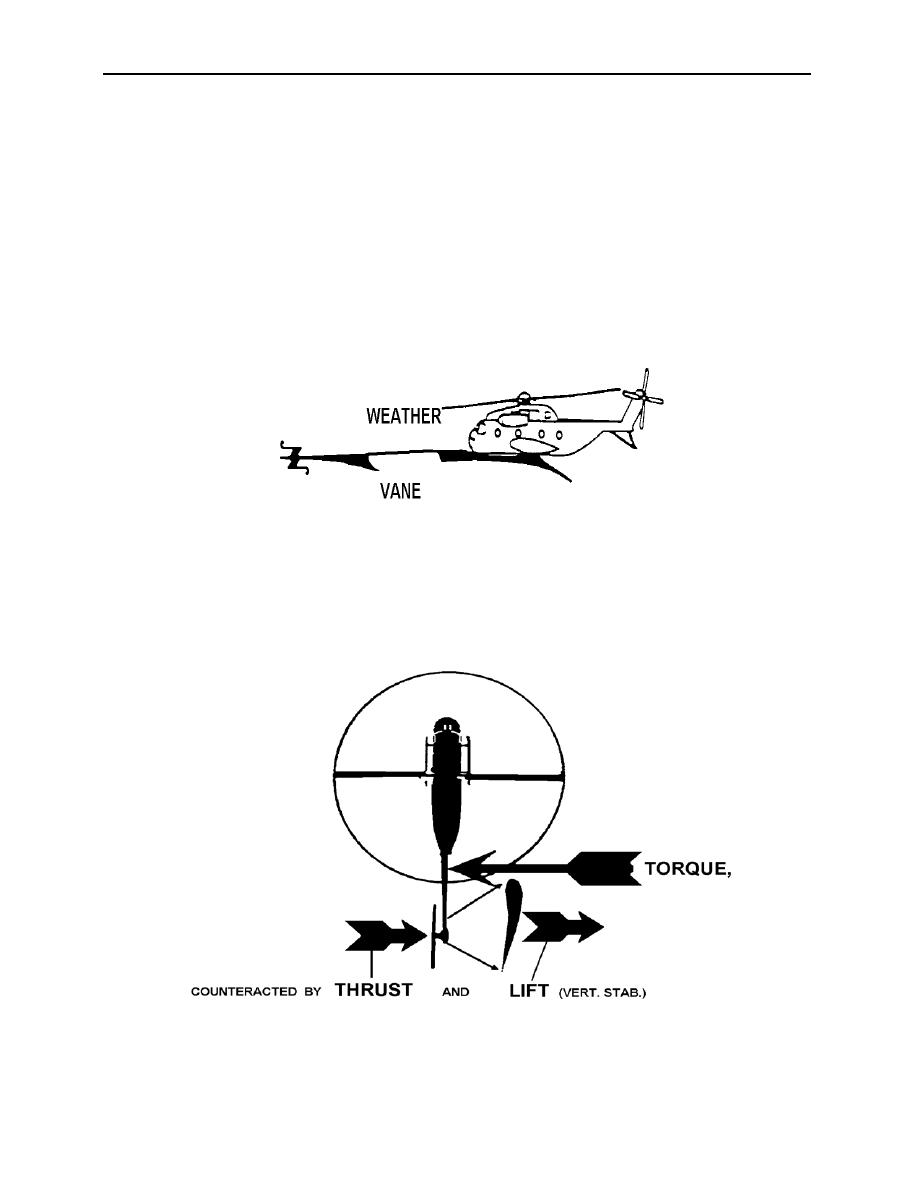 |
|||
|
|
|||
|
|
|||
| ||||||||||
|
|  HELICOPTER AERODYNAMICS WORKBOOK
CHAPTER 3
While the tail rotor system produces antitorque effect, it also produces thrust in the horizontal
plane, causing the aircraft to drift right laterally in a hover (figure 3-6). Tilting the main rotor
system to the left with the cyclic so that the aircraft can remain over a spot in a hover
compensates for this. This causes the aircraft fuselage to tilt slightly to the left in a hover and
touch down left skid first in a vertical landing.
In a no-wind hover, the tail rotor provides all of the antitorque compensation. As the aircraft
moves into forward flight, the tail rotor is assisted in this compensatory effort by the weather-
vaning effect and the vertical stabilizer. The increased parasitic drag produced on the
longitudinal surface of the aircraft as the relative wind increases causes the aircraft to "steer"
into the relative wind. This weather-vaning effect will increase proportionally with airspeed and
provide minor assistance to the antitorque effect (figure 3-7).
Figure 3-7
At higher speeds, tail rotor power requirements are significantly reduced by mounting a
vertical stabilizer shaped like an airfoil, which produces lift opposite the direction of the torque
effect. By reducing the power required on the tail rotor, more engine power is now available to
drive the main rotor system (figure 3-8).
Figure 3-8
HELICOPTER POWERED FLIGHT ANALYSIS 3-7
|
|
Privacy Statement - Press Release - Copyright Information. - Contact Us |